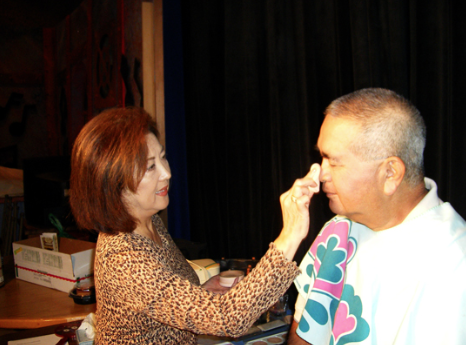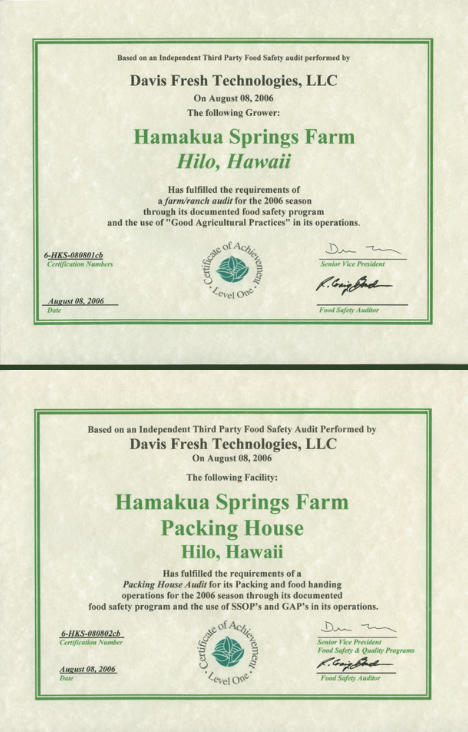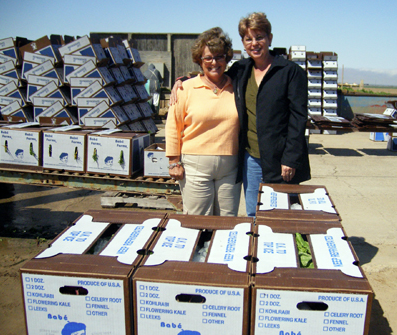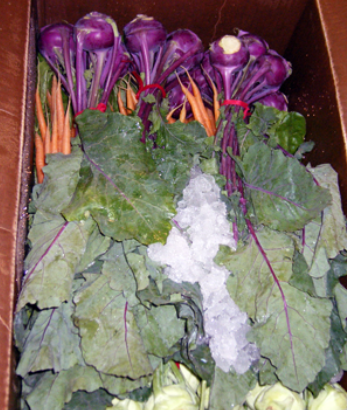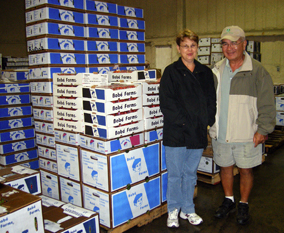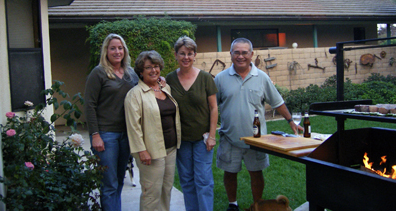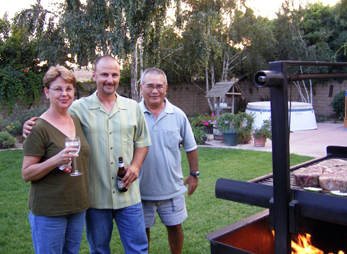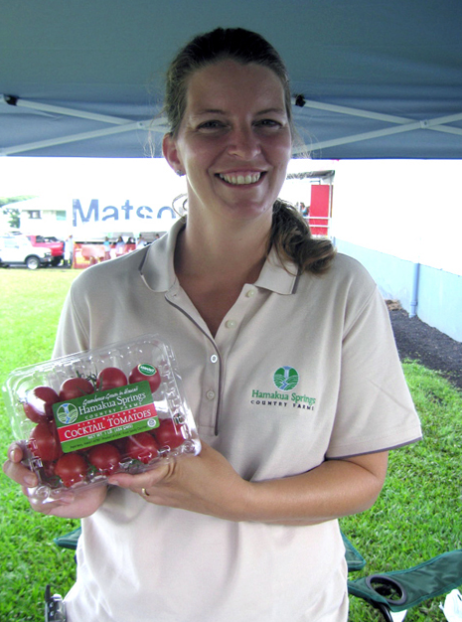We are excited to announce our brand new tomato recipe contest!
We look forward to seeing your best tomato recipes. You can enter original recipes in one (or more) of three categories:
• Entree
• Salad
• Preserves & Condiments
Each category offers three prizes: $350, $300 and $250 Makana cards (gift certificates) good at Foodland and Sack and Save stores.
Top recipes will be prepared by students of the food service program at Hawai’i Community College, and then judges will select winners.
Winners will be announced on March 14, 2007 on the Hamakua Springs blog Ha Ha Ha!. Entries may be featured on the blog, in other promotional materials, and possibly in an upcoming Hamakua Springs cookbook.
Read the blog for updates on the contest and more about Hamakua Springs Country Farms.
 Allan Okuda, director of the Hawai’i Community College Food Service Program, left, and Richard Ha, owner of Hamakua Springs Country farms, right
Allan Okuda, director of the Hawai’i Community College Food Service Program, left, and Richard Ha, owner of Hamakua Springs Country farms, right
How to enter
Email your entry to contest@hamakuasprings.com, or mail it to Hamakua Springs Recipe Contest, 421 Lama St., Hilo HI 96720. Include the recipe’s title, ingredients list, preparation, your full name, address, daytime phone number and email address. Enter as many recipes as you’d like (each recipe must be submitted in a separate email or on a separate page, each with full information as above) but we must receive all entries by 11:59 p.m. on January 31, 2007.
The rules
1. Submit your favorite original recipe that includes tomatoes in one of the following three categories: Entree; Salad; Preserves & Condiments.
2. Entry requirements:
Ingredients must be readily available. Please indicate which category your recipe falls under. Please include the name of the dish, ingredients with exact U.S. measurements, how it’s prepared, and the number of servings. Your recipe must not have been previously published and it must be an original creation.
3. How to enter:
Email your entry to contest@hamakuasprings.com, or mail your clearly written or typed entry to Hamakua Springs Recipe Contest, 421 Lama St., Hilo HI 96720. Include your full name, address, daytime phone number and email address. We must receive your entry on or before January 31, 2007.
4. Judging:
Judges to be announced here soon! Judges’ decisions are final. Winners will be announced at Ha Ha Ha! on March 14, 2007, and by phone soon thereafter.
5. Prizes:
Three grand prizes (one per category): $350 Makana Cards (valid at Foodland and Sack and Save stores) Second place in each category: $300 Makana Card. Third place in each category: $250 Makana Card.
6. General rules:
Open only to Hawai’i residents. Employees of Hamakua Springs Country Farms, its affiliated companies, contest sponsors, their agencies and families are not eligible. No purchase is necessary. Enter as many recipes as you’d like. Hamakua Springs cannot be responsible for problems with email transmission or late, lost, damaged, incomplete, illegible or misdirected mail. Entries cannot be acknowledged or returned. All federal, state and local laws and regulations apply. Prizes are nontransferable and may not be redeemed for cash. Judges’ decisions are final. Hamakua Springs Country Farms reserves the right to use entrant’s name and likeness and to publish any entry submitted. All entries become property of Hamakua Springs Country Farms. Entry constitutes permission to edit, modify, publish and otherwise use the recipe in any way without compensation.
7. Winners:
For a list of winners (available after March 14, 2007) send a stamped, self-addressed #10 envelope to: Hamakua Springs Country Farms, 421 Lama St., Hilo HI 96720.
And one last thing:
Now that you’re here, we hope you’ll look around our blog. We generally update it three times a week and we have a lot of fun with it.
Here at the blog you can read about Hamakua Springs president Richard Ha’s “39 pounds in 39 weeks” weight loss goal. He updates how it’s going–and how he’s doing it–every Monday. As of 11/1/06, he’s almost halfway there!
We also blog about:
our farm
our employees
our tomatoes, lettuce, bananas, cucumbers and new products
trips we take
our community
riding bicycles
restaurants that use our products
how we operate
the beautiful Hamakua coast of Hawai’i
sustainability
charity events we are involved with
articles written about us
hydroponics
wearing shorts
and much, much more.
If you like what you see at Ha Ha Ha!, please bookmark us or sign up for our RSS feed. And now go get your tomato recipe together!

